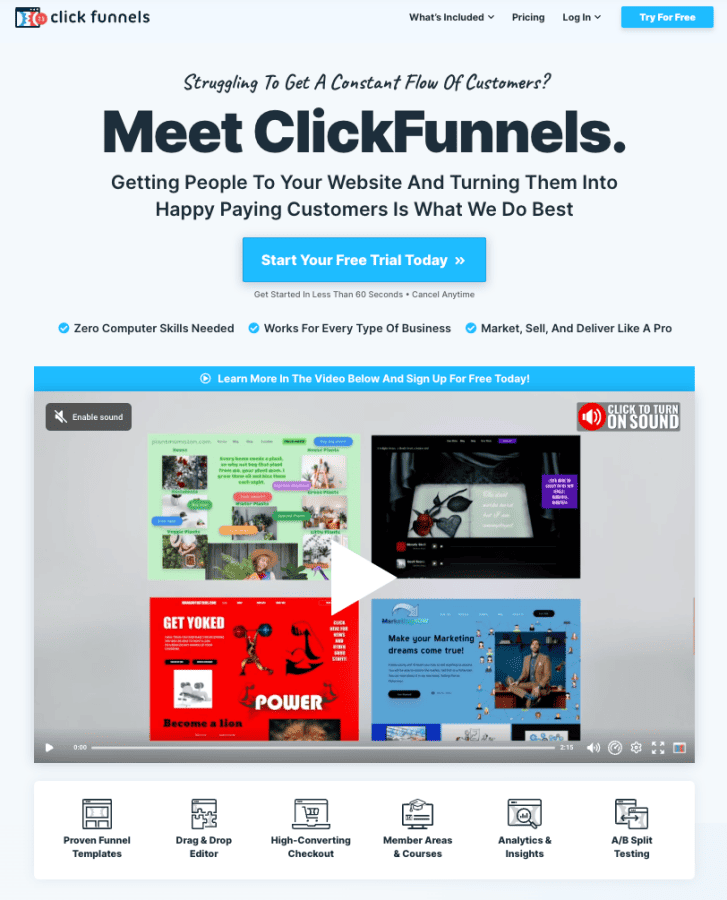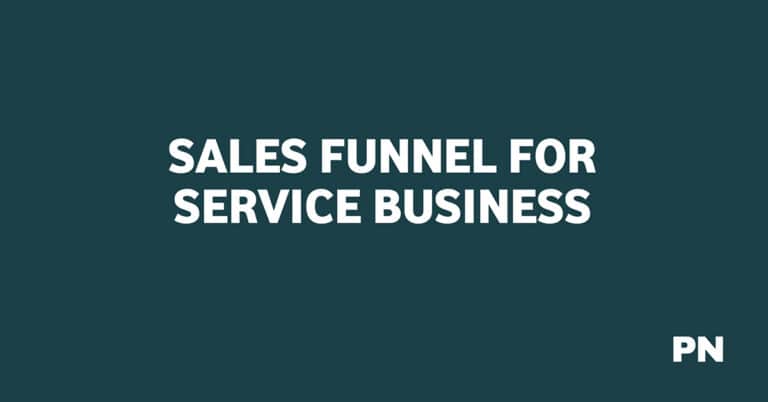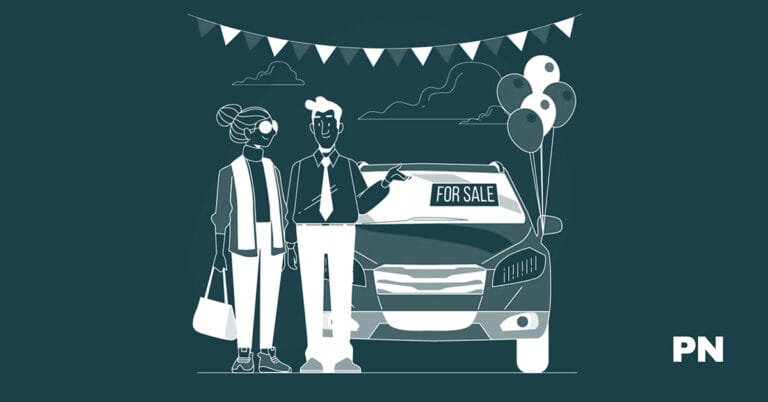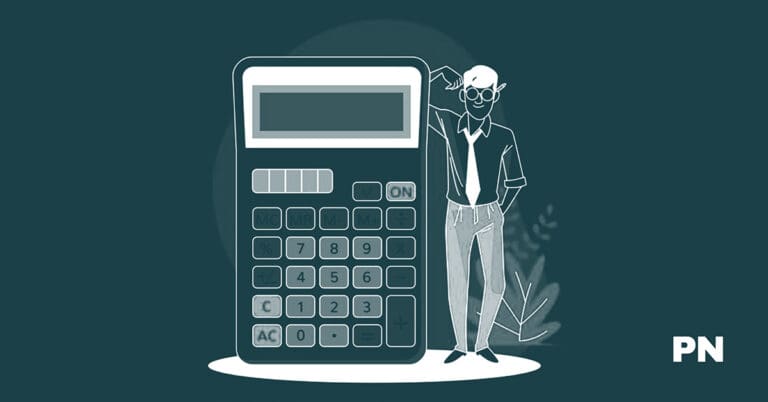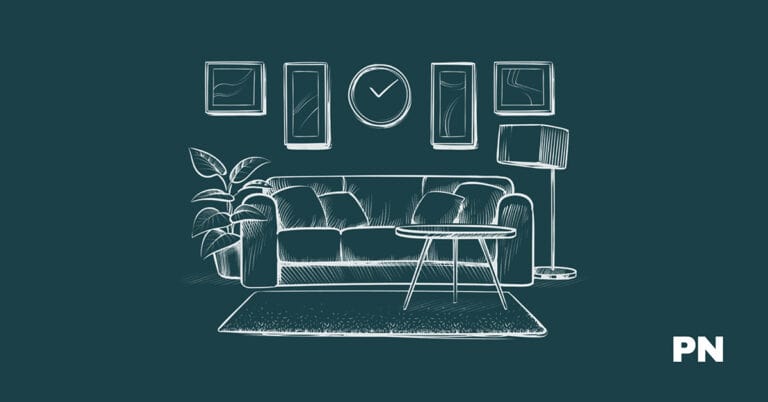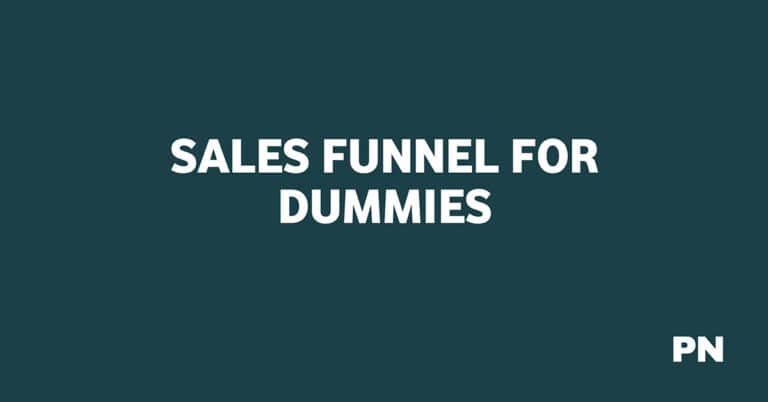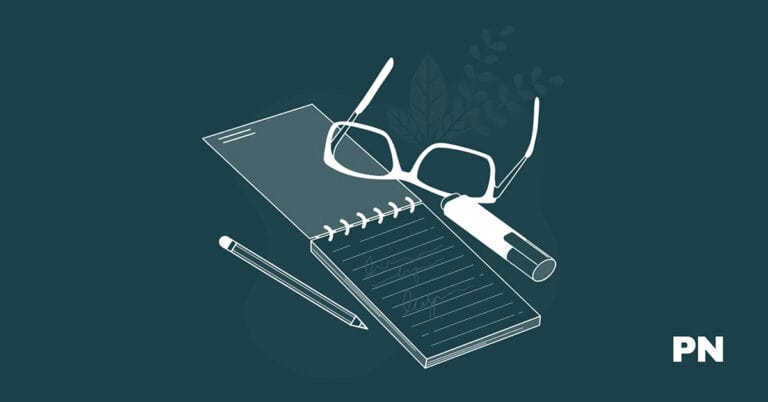Sales Funnel for B2B Guide
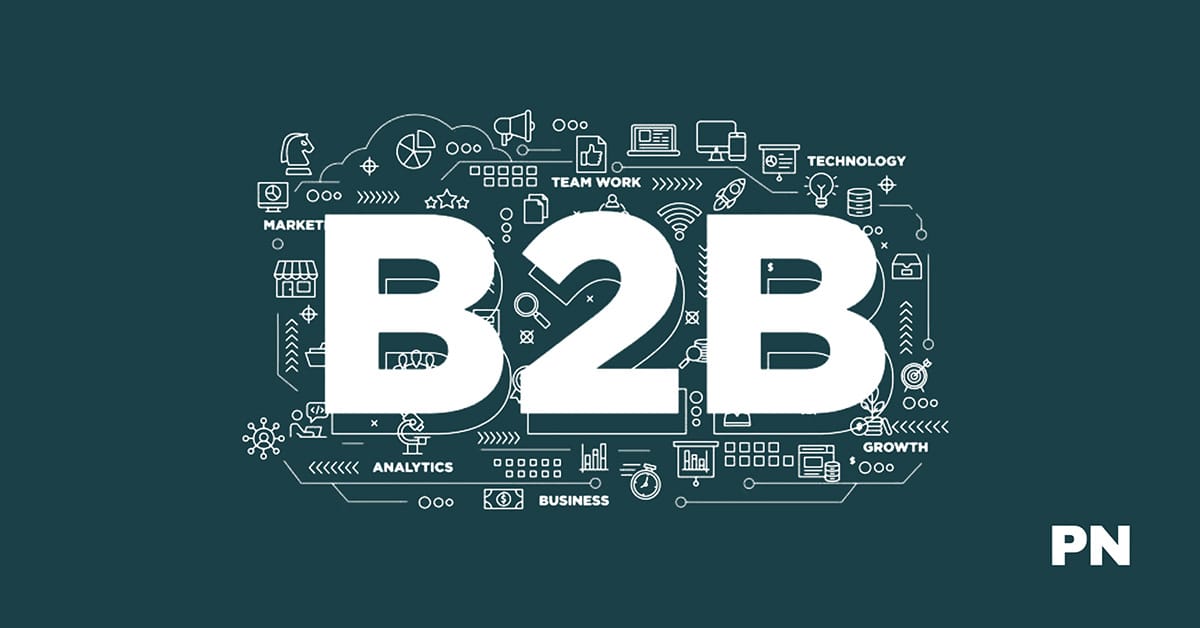
To improve your B2B sales process, you’ll want to examine your sales funnel closely.
The sales funnel is the path that your prospects take from initial awareness to final purchase, and understanding this journey is critical to creating an effective sales strategy. Companies with well-defined sales funnels can see up to double the conversion rates of those without.
A B2B sales funnel can be broken down into several stages, each requiring a different approach. At the top of the funnel, you must build awareness and generate interest in your product or service.
As prospects move further down the funnel, you’ll need to provide more targeted information and address their needs and pain points. Ultimately, your goal is to guide them toward a purchase decision.
While every sales funnel is unique, some standard best practices can help you create an effective B2B sales funnel. By understanding your target audience, creating targeted content, and using automation tools to streamline your processes, you can make a sales funnel that drives conversions and helps you grow your business.
What is a B2B Sales Funnel?
A B2B sales funnel is a visual representation of the sales process that a business-to-business (B2B) company uses to convert prospects into customers.
It is a systematic approach that guides potential customers through stages, from initial product or service awareness to the final purchase decision.
The B2B sales funnel is typically divided into three main stages:
- Top of the Funnel (TOFU): This is the awareness stage where potential customers become aware of your product or service. It is the first stage of the funnel, and it is all about creating interest and awareness about your product or service. At this stage, potential customers are looking for solutions to their problems and trying to learn more about your company.
- Middle of the Funnel (MOFU): This is the interest and engagement stage where potential customers consider your product or service. They have already shown some interest and are now seeking more information to help them decide. At this stage, you need to provide them with more details about your product or service to help them make an informed decision.
- Bottom of the Funnel (BOFU): This is the decision and purchase stage where potential customers are ready to purchase. At this stage, you need to provide them with the information they need to decide and convince them that your product or service is the right choice for them.
Why You Need a B2B Sales Funnel?
If you are in the B2B industry, having a well-designed and optimized sales funnel is crucial for your business’s success. A sales funnel is a visual representation of your potential customers’ journey from the moment they become aware of your business to the point where they make a purchase.
Here are some reasons why you need a B2B sales funnel:
1. Helps You Understand Your Customers Better
A sales funnel helps you better understand your customers by providing insights into their behavior and preferences. By tracking their journey through the funnel, you can identify the pain points they experience and the solutions they seek.
This information can help you tailor your marketing messages and sales pitch to meet their needs and increase your chances of selling.
2. Increases Conversion Rates
A well-designed sales funnel can help you increase your conversion rates by guiding your potential customers through the different stages of the funnel.
By providing them with relevant information and addressing their concerns at each stage, you can build trust and credibility, making it more likely for them to purchase.
3. Improves Customer Retention
A sales funnel is about acquiring new customers and retaining existing ones. By providing your customers with a positive experience at each stage of the funnel, you can increase their loyalty and encourage them to make repeat purchases.
4. Saves Time and Resources
A sales funnel can help you save time and resources by automating specific tasks and processes. Using marketing automation tools, you can streamline your lead generation, lead nurturing, and sales processes, allowing you to focus on other aspects of your business.
Stages of the B2B Sales Funnel
A B2B sales funnel is a sequence of stages B2B buyers go through to become customers. There are multiple stages in a B2B sales funnel, each crucial for converting leads into customers. This section will discuss the different stages of a B2B sales funnel and how to optimize each stage to increase your conversion rate.
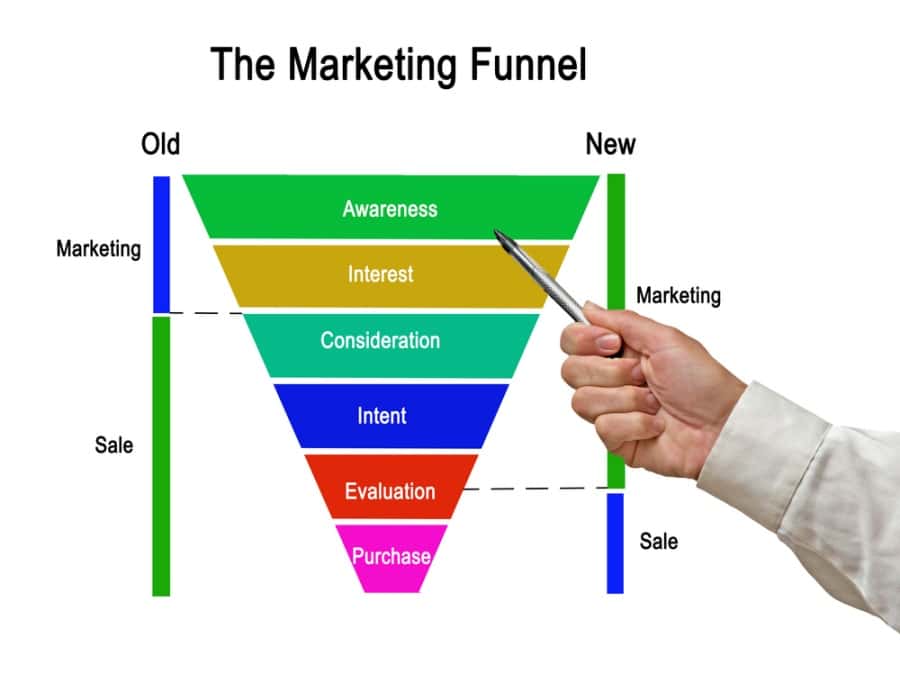
Here are the stages of the B2B funnel:
The Awareness Stage (Top of the Funnel, TOFU)
The Awareness Stage is the first stage of a B2B sales funnel. At this stage, potential customers become aware of your product or service. They may have a problem or a need, but they are not aware of your solution yet.
This stage aims to create awareness and interest in your product or service.
To create awareness, you must provide valuable content that educates your potential customers about their problems and how your product or service can solve them. You can use various channels to create awareness, such as social media, blog posts, webinars, and podcasts.
The Consideration/Evaluation Stage (MOFU)
The Consideration/Evaluation Stage is the second stage of a B2B sales funnel.
At this stage, potential customers have become aware of your product or service and are considering it as a solution to their problem. This stage aims to provide more information about your product or service and convince potential customers that your solution is best for them.
You must provide more detailed information about your product or service, such as case studies, white papers, and testimonials. You can also offer demos or free trials to help potential customers evaluate your product or service.
Purchase Stage (Bottom Of The Funnel)
The Purchase Stage is the third and final stage of a B2B sales funnel. Potential customers have decided to purchase your product or service at this stage. This stage aims to make the purchase process as easy and smooth as possible.
To do this, you must provide a straightforward and easy-to-use checkout process. You can also offer incentives, such as discounts or free shipping, to encourage potential customers to purchase.
Post-Purchase Stage
The Post-Purchase stage is often overlooked, but it is crucial for building customer loyalty and increasing repeat purchases. At this stage, you must provide excellent customer service and support to ensure your customers are satisfied with their purchase.
You can also use this stage to ask for customer feedback and reviews. This feedback can help you improve your product or service and improve customer relationships.
Repeat Purchase Stage
The Repeat Purchase stage is the ultimate goal of a B2B sales funnel. At this stage, your customers will be satisfied with your product or service and willing to purchase from you again. This stage aims to build customer loyalty and encourage repeat purchases.
To do this, you must provide ongoing value to your customers, such as new products or services, exclusive offers, and loyalty programs. You can also use this stage to ask for referrals from your customers, which can help you reach new potential customers.
The B2B sales funnel is crucial for converting leads into customers. Understanding the different stages of a B2B sales funnel and optimizing each stage can increase your conversion rate and build customer loyalty.
How Do I Create a B2B Sales Funnel?
Creating a B2B sales funnel is a strategic process that involves several steps. Each step is crucial in guiding your potential customers through the buying process and ultimately converting them into paying customers.
Here are the steps you need to follow to create an effective B2B sales funnel.
- Identify your target audience. The first step in creating a B2B sales funnel is identifying your target audience. You need to know your potential customers, their needs and pain points, and how your product or service can solve their problems. This will help you create a targeted marketing message that resonates with your audience.
- Create a lead magnet. A lead magnet is a valuable content you offer your potential customers in exchange for their contact information. This could be an ebook, whitepaper, webinar, or any other content that provides value to your audience. The goal is to attract leads and start building a relationship with them.
- Develop a landing page. A landing page is a dedicated page on your website where you send traffic from your lead magnet. The landing page should be designed to convert visitors into leads by highlighting the benefits of your offer and making it easy for them to sign up.
- Create a lead nurturing campaign. Once you have captured leads, you must nurture them with emails that provide more value and build trust. The goal is to keep your brand top-of-mind and educate your leads about your product or service.
- Make a sales offer. When your leads are ready to buy, you must make a sales offer tailored to their needs. This could be a free trial, a demo, or a consultation. The goal is to provide a low-risk way for your leads to experience your product or service and make a purchase decision.
By following these steps, you can create an effective B2B sales funnel that guides your potential customers through the buying process and converts them into paying customers. Always test and optimize your funnel to improve its effectiveness over time.
What is The Best Funnel Software for B2B?
Several options are available when choosing the best funnel software for B2B. However, ClickFunnels is the best sales funnel software for B2B entrepreneurs.
Here’s why:
ClickFunnels: The Best Sales Funnel Software for B2B
ClickFunnels is an all-in-one platform that allows B2B entrepreneurs to build sales funnels faster and efficiently scale their business. With ClickFunnels, you can create high-converting sales funnels, upsells, and downsells in just a few clicks.
Here are some of the unique features that make ClickFunnels the best sales funnel software for B2B:
- Free Funnel Templates: ClickFunnels offers a wide range of complimentary funnel templates that you can use to start your sales funnel quickly. These templates are designed to convert visitors into customers and are customizable to suit your business needs.
- Shopping Cart and Checkout: ClickFunnels has a built-in shopping cart and checkout system, making it easy for B2B entrepreneurs to sell their products and services online. With ClickFunnels, you can accept payments from multiple payment gateways, including PayPal, Stripe, and more.
- CRM Integration: ClickFunnels integrates with several CRMs, including HubSpot, Salesforce, and Infusionsoft. This integration allows you to manage your leads and customers more efficiently and helps you keep track of your sales and marketing campaigns.
- Analytics and Tools: ClickFunnels provides detailed analytics and tools to track your sales funnel’s performance. With ClickFunnels, you can see how many visitors are coming to your sales funnel, how many are converting into customers, and more.
Frequently Asked Questions
What is a funnel in B2B business?
A funnel in B2B business is a visual representation of the customer journey from awareness to purchase. Companies use it to guide potential customers through each stage of the buying process. It helps businesses identify potential customers, nurture them, and convert them into paying customers.
What are the key stages in developing a B2B sales funnel?
The key stages in developing a B2B sales funnel are as follows:
- Awareness
- Interest
- Consideration
- Intent
- Evaluation
- Purchase
How do you create an effective B2B sales funnel?
To create an effective B2B sales funnel, you need to:
- Identify your ideal customer profile
- Understand your customer’s buying process
- Produce content for each stage of the funnel as needed
- Nurture your leads to move them through the funnel
- Continuously analyze and optimize your funnel for better performance
How can I optimize my B2B funnel for higher conversion rates?
To optimize your B2B funnel for higher conversion rates, you can:
- Use A/B testing to test different versions of your funnel
- Use retargeting to bring back potential customers who left the funnel
- Optimize your landing pages for a better user experience
- Use personalized messaging to engage potential customers
- Continuously analyze and optimize your funnel for better performance
What metrics are crucial for analyzing the performance of a B2B funnel?
The metrics that are crucial for analyzing the performance of a B2B funnel are:
- Conversion rates
- Cost per acquisition
- Customer lifetime value
- Return on investment
- Funnel drop-off rates
How do industry benchmarks influence B2B conversion funnel performance?
Industry benchmarks can help businesses compare their funnel performance against their competitors. By analyzing industry benchmarks, companies can identify areas for improvement and implement changes to improve their performance.
Wrapping Up
Congratulations! You have learned about the B2B sales funnel and how to implement it in your business. Remember that the sales funnel is a powerful tool for increasing sales and growing your business.
The B2B sales funnel consists of several stages: awareness, interest, evaluation, engagement, and action. Each stage requires a different approach, and tailoring your sales and marketing strategies accordingly is essential.
To succeed in the B2B sales funnel, you must focus on building solid relationships with your customers. This means understanding their pain points and providing solutions that meet their needs.
It is essential to track your progress and measure your results. Use analytics tools to monitor your website traffic, conversion rates, and other vital metrics. This will help you identify areas for improvement and make data-driven decisions.
The B2B sales funnel is a complex process that requires careful planning and execution. However, by following the steps outlined in this guide, you can create a successful sales funnel that drives growth and revenue for your business.
Keep experimenting, learning, and refining your approach, and you will see the results you desire.
Remember, the key to success is persistence and dedication. Keep pushing forward, and you will achieve your goals.
Disclosure: We may earn commissions if you buy via links on our website. Commissions don’t affect our opinions or evaluations. We’re also an independent affiliate of many platforms, including ClickFunnels, Kartra, GoHighLevel, Podia, Northwest Registered Agent, and others. We’re not employees of these services. We receive referral payments from them, and the opinions expressed here are our own and are not official statements of these companies.
